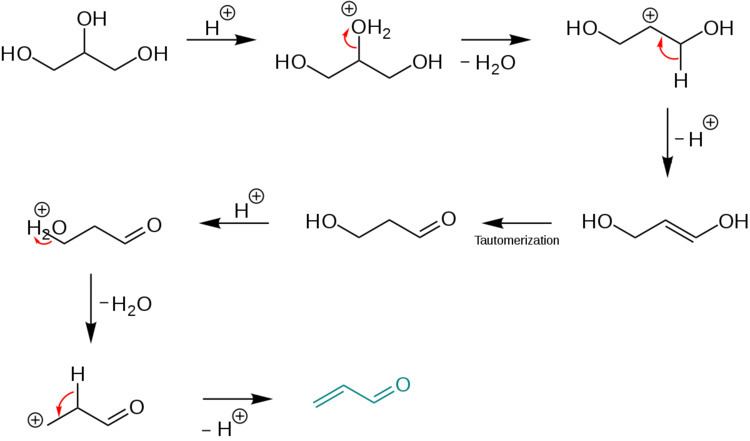 | ||
The Skraup synthesis is a chemical reaction used to synthesize quinolines. It is named after the Czech chemist Zdenko Hans Skraup (1850-1910). In the archetypal Skraup reaction, aniline is heated with sulfuric acid, glycerol, and an oxidizing agent such as nitrobenzene to yield quinoline.
In this example, nitrobenzene serves as both the solvent and the oxidizing agent. The reaction, which otherwise has a reputation for being violent, is typically conducted in the presence of ferrous sulfate. Arsenic acid may be used instead of nitrobenzene and the former is better since the reaction is less violent.
Reaction mechanism
The reaction most likely begins with the acid catalyzed dehydration of glycerol to form acrolein.
This then undergoes 1,4-addition in a manner broadly similar to that of the Doebner–Miller reaction. Acrolein itself is not used since it undergoes polymerisations under the conditions of the experiment.
